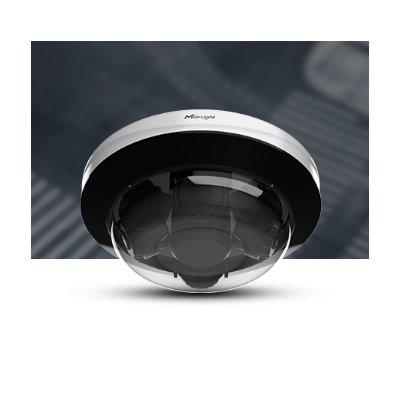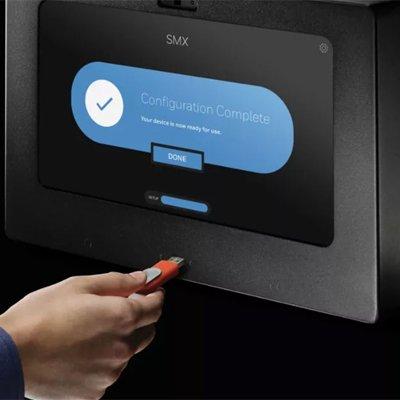How can thermal cameras be used effectively for fever detection?
Editor Introduction
The COVID-19 global pandemic continues, and more and more companies are looking for ways to continue (or resume) operations while minimising the coronavirus’s negative impact on their workforce, or potentially contributing to disease spread among the wider population. Thermal cameras have been proposed as a solution to screen individuals for elevated body temperature since the beginning of the pandemic. However, the technology has its detractors, and there are regulatory questions. We asked this week’s Expert Panel Roundtable: how can thermal cameras be used effectively for fever detection to screen for infectious diseases?
What we’re seeing in the UK and the EU is a wild west scenario where thermal imaging systems are being bought and sold in a largely unregulated market and with some very spurious claims being made. In fact, the published research on the use of these systems is largely being ignored in the rush to find “solutions.” Because of the precise readings that need to be taken and the many variables which influence the measurement, cameras need to be very accurate in order to be useful, and they must be installed in a manner that keeps them reliable. The problem is that the margin of error is so great that users will effectively be giving people with elevated temperatures the “all clear” and permitting them to enter environments where they could spread the virus. Equally, any false positives need to be followed-up with a secondary test, thus adding to queues and causing further disruption or leading to people being excluded even though they’re fine. For companies, my advice is unless you’re willing to pay for a high end, accurate system and use it correctly, you really shouldn’t bother with one at all.
Thermal cameras capable of reading skin temperature within a highly accurate range can detect elevated human temperatures. Installation environment is critical for ensuring accuracy and efficiency when using this technology during the COVID-19 pandemic. Thermal cameras are designed to be contactless measurement devices for indoor use only, and individuals entering from the outdoors to be monitored should be provided time to adjust to indoor temperatures to increase accuracy. Many thermal systems recommend use of a calibration device that maintains a constant temperature as a reference point for the thermal camera, which increases accuracy despite ambient temperature and humidity changes throughout the day. The camera’s field of view should not include reflective surfaces, direct sunlight, heavy backlight or items such as heaters, microwave ovens, and high-power lamps. All these steps are by no means an exhaustive list of all measures. Above all, it is important to follow the May 2020 overview from the FDA on thermal imaging systems and COVID-19 and confirm any detected high temperatures with a secondary method such as an NCIT or clinical grade contact thermometer.
Despite lockdown restrictions being eased, there’s still a risk of continued interruption of operations due to the spread of infection and disease. Screening in public places and at building entry ways will soon become the new normal. Thermal imaging can play a key technology role in health and safety programs by offering a frontline screening method that is relatively quick and easy to execute, while maintaining appropriate social distancing guidelines. We have seen exponential demand across a variety of industries, notably large organisations and those with critical infrastructure, looking to implement this technology as part of their preventative measures against further spread of the virus. Unlike most COVID-19 symptoms, skin temperature can be objectively screened and verified – although it is always recommended that additional medical screening occurs before a diagnosis is made. FLIR’s FDA-registered thermal cameras are supporting businesses, government, and the public, helping them quickly and safely reopen and stay open by identifying elevated skin temperatures, which will help prevent or minimise a potential outbreak.
Thermal cameras shouldn’t just be implemented as a knee-jerk reaction. They are not a COVID-proof solution and have their flaws. For example, someone carrying the disease may not have a temperature, so thermal cameras alone won’t stop the spread. Plus, they are not always accurate. Human bodies fluctuate in temperature, but flagging that someone is running a temperature when in fact they’re not could lead to unnecessary panic and potential self-isolation for the person in question, which has yet more consequences. For those considering thermal cameras, my questions would be, what are you trying to solve, and how do they meet this need? If there is a solid business case, then do your research to understand how well they’ll integrate with existing technology and processes. When operated on a standalone basis, thermal cameras are just yet another system for employees to manage. Only when properly unified with existing systems and processes can they enhance and streamline facility management and operations.
First and foremost, thermal cameras should not be solely or primarily used to diagnose or exclude a diagnosis of fever or infectious disease. The cameras are designed for the detection of individuals with elevated skin temperature (EST), so as to achieve rapid and safe preliminary screening in public areas with high efficiency. This method is safer, faster and smarter than traditional temperature measurement. It is “non-contact,” so the risks of infection are also lower. To effectively screen for EST, there are two key aspects to consider. One is the camera itself, and the other is associated with its installation and the environment. Thermal cameras that incorporate AI technology can more effectively detect human skin-surface temperature and reduce false alarms from other heat resources. Besides, it’s important to note there are many other factors that can affect the accuracy and effectiveness of thermal cameras, such as the testing speed, time, measurement, distance, angle, parameter configuration, and preheating time. They are required to be used in a stable indoor environment without wind, and the ambient temperature should be consistent.
Safeguarding the workforce is crucial as the easing of lockdown continues, and a key way to achieve this is with an elevated temperature screening solution. These tools use a thermal and optical camera to analyse body temperature and discreetly alert the operator when the set temperature threshold is exceeded by somebody who has been screened. With this technology in place, the exposure of a potentially infected individual to others can be decreased, minimising the risk of a local lockdown and providing a safer working environment. However, it’s important to note that not all solutions are created equal. Factors such as accuracy of detection, field of view – signifying the number of individuals that can be screened at one time – mobility of set up and connectivity must be taken into account. With holistic connectivity, a secure end-to-end solution can be linked locally to a centralised command and control centre, or remotely to any connected device. This level of flexibility would support an install of cameras at multiple locations, with the ability to stream live into a single monitoring system – a far more efficient process. Alarms can then be viewed locally or remotely from any connected device, providing an early warning to operators.
Designed-for-purpose thermal screening solutions, which comply with appropriate regulations such as having FDA registration, could be used at controlled entry areas of buildings as part of a business’s bid to become COVID-secure. These elevated skin temperature (EST) screening solutions provide real-time indication of elevated temperature, which is often a symptom of infection. If the measured temperature breaches the average, the system alerts operators, and relevant action can be taken to ensure the individual does not further interact with otherwise healthy people. However, these solutions are only truly effective when properly planned, deployed and operated in line with appropriate policies, procedures and compliance needs such as GDPR – which is why employing an expert in the EST screening sphere is vital. But, when this is all undertaken correctly and used as part of a layered holistic approach, combined with other measures, the spread of COVID-19 can be minimised and further mitigated.
Thermal imaging systems are an important singular component of a broader strategy to create safer and healthier environments as we reopen our country. When developed to follow FDA guidelines, and when used as designed, thermal scanning products can quickly provide an initial assessment of a person’s body temperature while maintaining social distancing protocols. In an effort to provide safer environments for businesses and other gathering places, thermal imaging can detect elevated temperatures associated with potentially ill people. Additionally, these systems are not easily spoofed like pyrometer-based kiosk solutions. It’s important to note that temperature screening products alone cannot diagnose or exclude diagnosis of COVID-19 or any other disease or condition. However, when used correctly, they are very fast and effective at providing an initial temperature assessment for business and institutions seeking to implement daily health checks as recommended by the CDC.
Editor Summary
Thermal cameras can be a tool for detecting fever during a global pandemic, but any use of the technology for this purpose is full of qualifications and caveats. Importantly, as our Expert Panelists point out, how the camera system is configured makes all the difference in whether temperature readings are accurate, and the downside of inaccurate readings is obvious – and potentially deadly. FDA guidelines limit how the cameras are used, not to mention guidance from other regulatory/government bodies such as the CDC. One of our panelists compares the market to a “wild west scenario,” and almost all the panelists are clear about how customers should approach the market: buyer beware.
Expert commentary
Maximising security and performance
DownloadThe truth behind 9 mobile access myths
DownloadGuide for HAAS: New choice of SMB security system
DownloadSecurity practices for hotels
DownloadAccess control system planning phase 2
DownloadMilesight 4x5MP AI Multi-Directional Camera
Anviz AI-driven Fisheye Dome Network Camera
Honeywell SMX: Cybersecurity for Operational Environments























